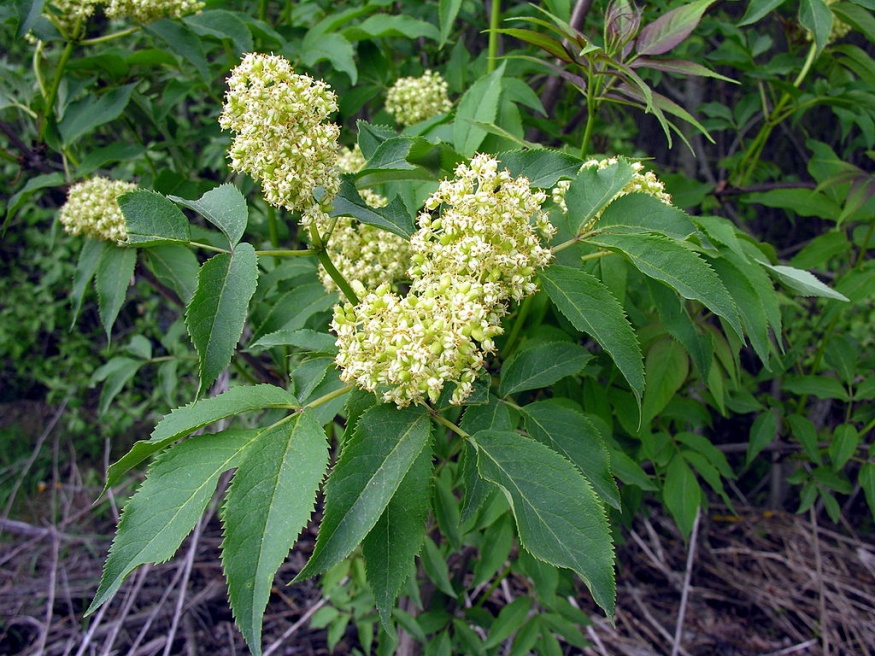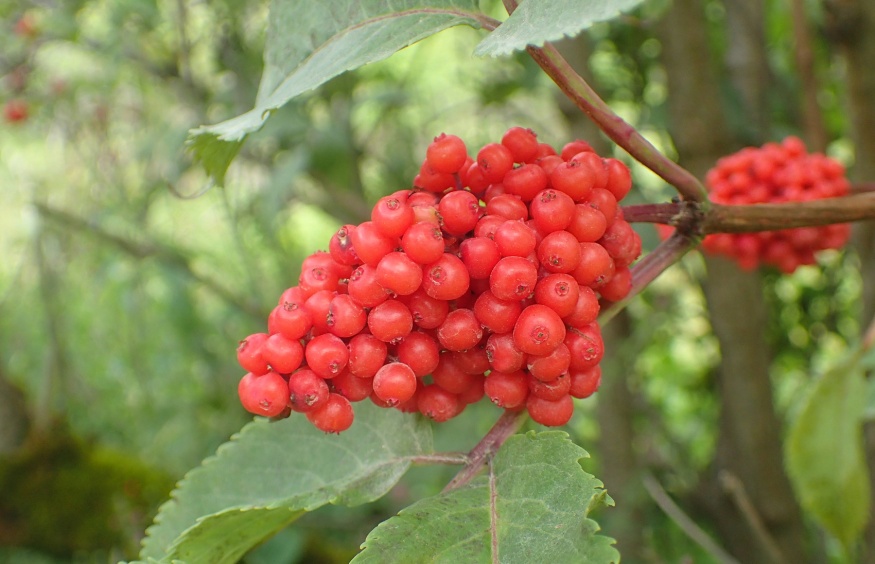About
Red elderberry is a fruiting bush native to North America and Eurasia. Its usually a medium shrub but can grow into a tree up to 20ft high. Commonly found in riverbanks, moist Woodlands, thickets, or fence rows; it can be singular or form thickets, spreading by rhizomes.
Young branches are glabrous with pinnate compound leaves bearing 5 to 7 leaflets. Showy fragrant flower clusters in racemes (hence the name racemosa) appear from May to June and are pollinated by insects. Clusters Showy, edible, typically dark red Berry-like drupes follow flowering. These attract wildlife, have a bitter flavor when raw, but can be cooked and made into jams, desserts, and wine. The roots can be made into a tea and the bark, leaves, and blossoms can be used medicinally.
Red elderberry attracts birds, butterflies, tolerates air pollution, and tolerates heavy clay. It Prefers moist to wet well drained humus-loam and a neutral to slightly acidic ph. It can be vigorous once established. Some recommend hard pruning yearly in the spring for the best form and display of foliage.
References
Fire Effects Information System (FEIS). (n.d.). Sambucus racemosa. Retrieved from https://www.fs.fed.us/database/feis/plants/shrub/samrac/all.html
MICHIGAN FLORA ONLINE. A. A. Reznicek, E. G. Voss, & B. S. Walters. February 2011. University of Michigan. Web. December 8, 2020. https://michiganflora.net/species.aspx?id=12
Missouri Botanical Garden. (n.d.). Sambucus racemosa. Retrieved from http://www.missouribotanicalgarden.org/PlantFinder/PlantFinderDetails.aspx?taxonid=278937&n=1
Plants For A Future. (n.d.). Sambucus racemosa - Michx. Retrieved from https://pfaf.org/user/Plant.aspx?LatinName=Sambucus+racemosa
Growing From Seed
Growing from seed is one of the most economical and satisfying ways to build a native plant garden. The table shows brief planting instructions, including how long and what kind of stratification this plant needs. For further information on stratification and seed preparation please refer to our article: Preparing To Grow Wild Plant Seeds
| Seeds/Packet | 40+ |
|---|---|
| Seeds/Gram | Coming soon... |
| Cost/Gram | $Price coming soon... |
| Dormancy Treatment | Cold Moist Stratification |
| Seeding Instructions | Soak seeds for 24hrs, then cold moist stratify for 3 months. |
Growing From Plants
Seedlings are a more economical option than established plants and an easier start than growing from seed. 4 pack plants indavidually have and approximate 2" square root ball. We also have large soil block plants, which are a bit more established than the seedlings. These grow as approximate 4" blocks. Plants do surprizingly well in the mail but need special care upon arrival. Please see Planting Mail Order Seedlings for information on how to plant and care for seedlings.
Shipping
We currently ship seeds to all Canadian provinces and ship plants just within the provinces of British Columbia and Alberta. Seeds ship year-round and usually take a few days (or longer if you are ordering from a distant province). It usually takes 2-5 business days in the mail for plant orders once shipped. Plants are generally available from May to September and can be reserved during off season; Shipping costs are calculated during checkout. Seed orders over $100 ship free! See Shipping for more details.

